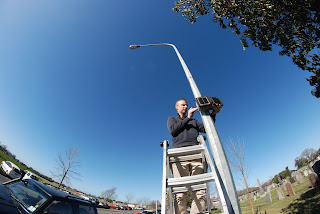So long, Rangiora - hello world!

On 13th September the ODIN air quality sensors were removed from the Rangiora lampposts they were attached to and collected together at the Environment Canterbury monitoring site for their final co-location test. Next week they will be removed from there and retrieved to our base in Christchurch. However, it's not all over for our little friends. After a check-over they will be packed up into a box and will begin their world tour. They will first be heading for the University of Montana in attractive mountain valley city of Missoula. Two ODIN units actually made an advance trip earlier this winter. Much of Montana has been suffering from huge wildfires pouring thick smoke across the towns and cities (see this article, for instance: https://www.missoulacurrent.com/outdoors/2017/09/missoula-smoke-health-effects/ ). We're working with colleagues at the University to see if the ODINs can be used to track this unpredictable hazard. After some testing, the Rangiora ODINs will then be...










